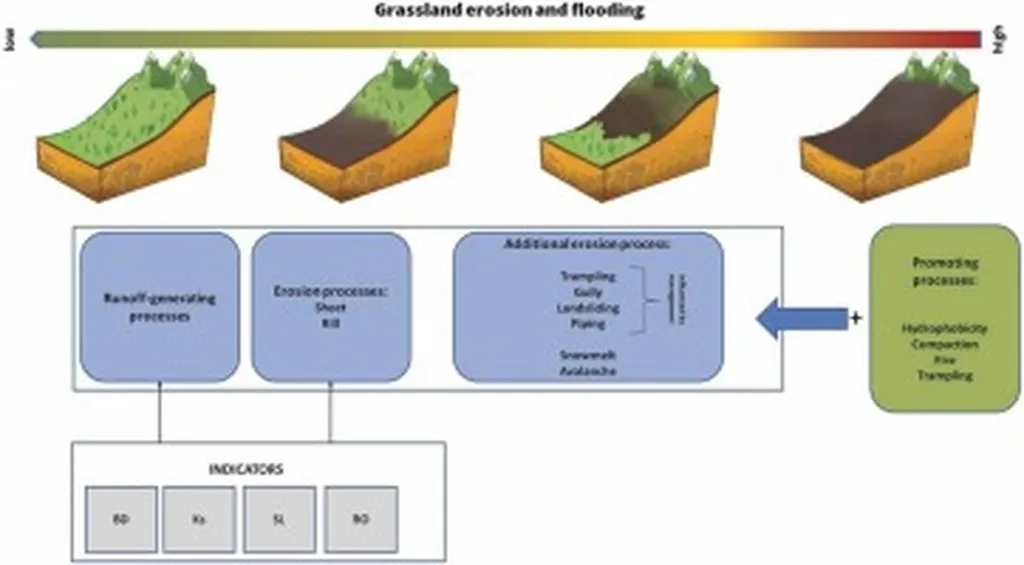In the rolling landscapes of the Czech Republic, a silent battle against soil erosion is being waged, and conservation grassland is emerging as a formidable ally. A groundbreaking study, led by Ivo Horák of the Department of Finance at Mendel University in Brno, has revealed that establishing conservation grassland can slash the risk of soil erosion by a staggering 64%. The research, published in the journal *Soil and Water Research* (translated to English as *Půda a vodní výzkum*), offers a beacon of hope for sustainable agriculture and soil resilience.
Horák and his team delved into a massive dataset of over 1.9 million Farmer’s blocks (DPBs) records from 2016 to 2022, employing logit regression models to uncover the intricate relationships between land use, management practices, and erosion risk. Their findings are nothing short of transformative. “We found that grassland establishment significantly reduces the likelihood of erosion events,” Horák explained. “This is particularly crucial in regions where concentrated runoff pathways pose a substantial threat to soil integrity.”
The study identified nearly 240,000 hectares of land, primarily along 33,000 concentrated runoff pathways, as prime candidates for targeted grassland conversion. However, the path to widespread adoption is not without its challenges. High opportunity costs in economically productive regions have historically hindered the uptake of conservation grassland. “The economic viability of grassland establishment is a critical factor,” Horák noted. “We need regionally tailored policies and long-term financial support to make this a viable option for farmers.”
The implications of this research extend far beyond the borders of the Czech Republic. A cluster analysis across EU Member States revealed a strong correlation between a low share of permanent grassland and high erosion exposure. This underscores the need for coordinated efforts and innovative policies to promote sustainable land management practices.
For the energy sector, the findings are particularly relevant. Soil erosion can lead to reduced land productivity and increased costs for land management, which can impact the viability of renewable energy projects that rely on large tracts of land. By adopting conservation grassland practices, energy companies can enhance soil resilience, reduce long-term costs, and contribute to a more sustainable future.
The study also highlights the importance of flexible land management options. As Horák put it, “We need to think beyond traditional approaches and explore innovative solutions that balance economic productivity with environmental sustainability.” This could include integrating conservation grassland into renewable energy projects, creating a symbiotic relationship that benefits both the environment and the energy sector.
In conclusion, the research by Horák and his team offers a compelling case for the adoption of conservation grassland as a measure to control soil erosion. By addressing the economic barriers and promoting flexible land management practices, we can pave the way for a more sustainable and resilient agricultural landscape. The findings published in *Soil and Water Research* serve as a call to action for policymakers, farmers, and energy companies to collaborate and implement these practices on a larger scale. The future of our soil—and our planet—depends on it.

